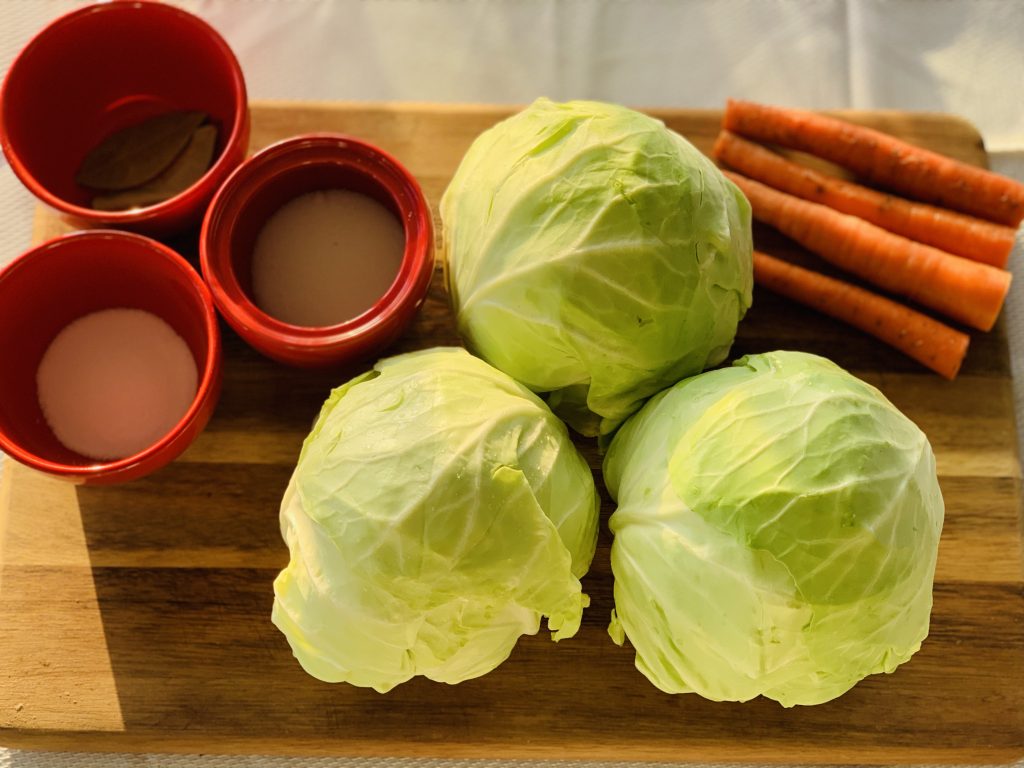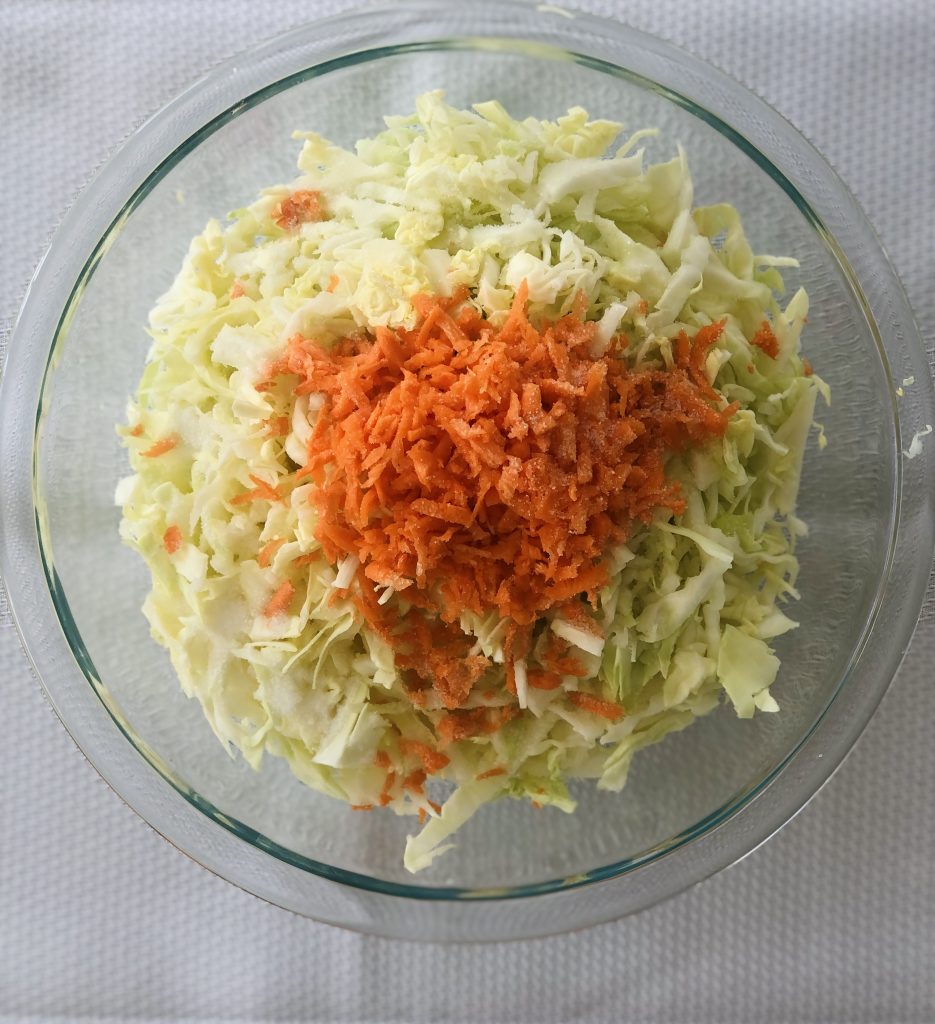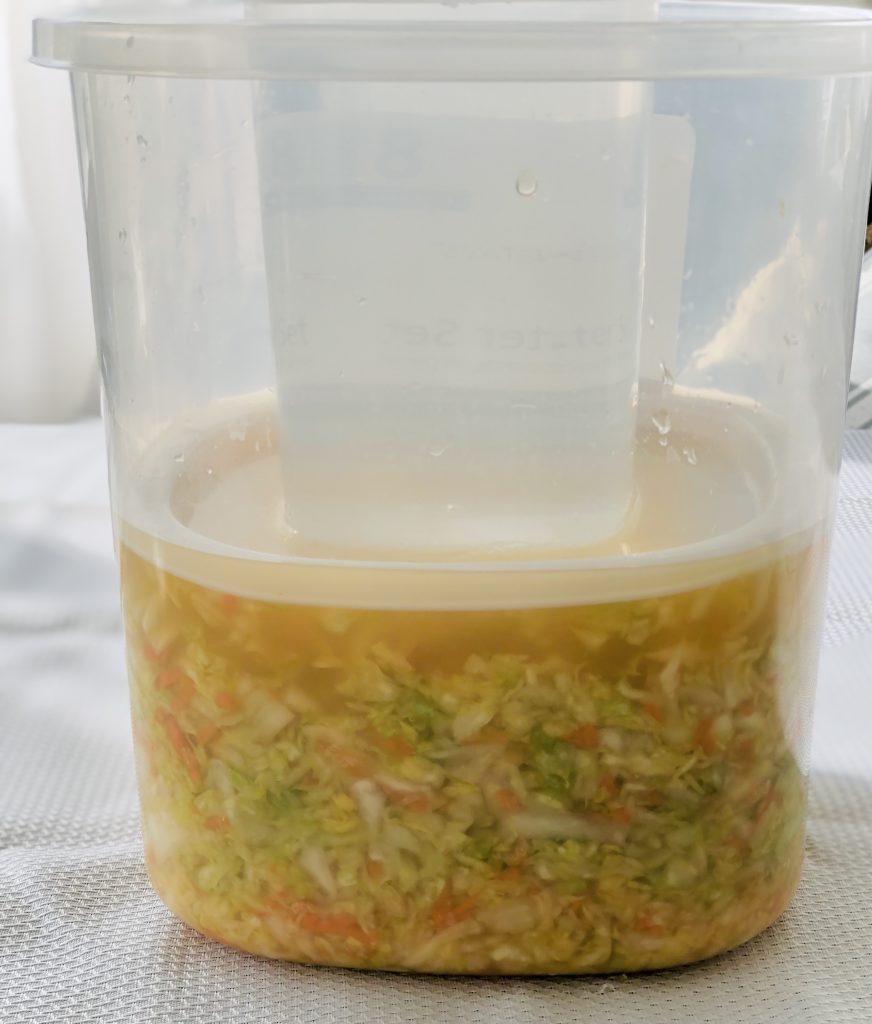Sauerkraut is a staple dish in any Russian household. My grandmother will constantly remind you of what a great probiotic it is, and that your gut will thank you. Sauerkraut is made through the process of lacto-fermentation, a process that has been around longer than my grandmother’s grandmother. The fermentation process transforms the bacteria on the cabbage into a healthy probiotic, and produces a delightfully pickled sauerkraut.
This recipe is incredibly easy to make, my grandmother says you only need to make it once to know the recipe for life. It requires very little equipment, four ingredients, and a little elbow grease. All you need to do is cut up the cabbage, add carrots, salt and sugar, and let the bacteria do the rest of the work. It helps to have a cabbage shredder to fasten the process. After three days you will have delicious sauerkraut that will last you for weeks.
When picking out the cabbage, the lighter the color the better. Green colored cabbage is younger, whereas older cabbage is more white. This is important because older cabbage releases more water, which is necessary for the fermentation process.

Shred the cabbage and carrots, transfer to a large bowl. Add one tablespoon of salt, and one teaspoon of sugar. Massage and squeeze the cabbage with your hands until the cabbage becomes watery and limp, this process can take about 5 minutes.

Move the cabbage to a container and pack it down with your fist. Pour any liquid left in the bowl over the cabbage. Add 1/4 of bay leaf on top. Continue packing cabbage into container until it is completely submerged by its liquids. Place a weight over the cabbage to keep it down, and then place a lid on top of container.

Allow the cabbage to ferment at room temperature for two days. Each day open the cabbage and poke a few holes to allow gas to escape. Refrigerate for one day or until ready to serve.



